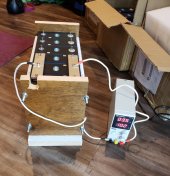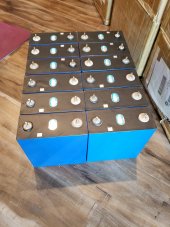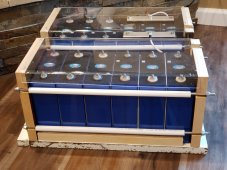BretS
New Member
- Joined
- Mar 30, 2021
- Messages
- 171
Started my top balancing, 3 cells at a time since my bank is a 3P4S in 2 sections. These are 310Ah cells from Exliporc Energy on Alibaba. Couple lessons I learned...
1/4" bus bar is too thick for the little studs - had to counter bore the bottom a bit to set them down some.
Make sure you get a power supply with a fine adjustment and 2 decimal places on the readout... this one is extremely touchy, and I had to set it with my DMM...
I know it will take a while, but I don't have another means of charging them because I have a contactor BMS that has to be assembled in place in my system...




1/4" bus bar is too thick for the little studs - had to counter bore the bottom a bit to set them down some.
Make sure you get a power supply with a fine adjustment and 2 decimal places on the readout... this one is extremely touchy, and I had to set it with my DMM...
I know it will take a while, but I don't have another means of charging them because I have a contactor BMS that has to be assembled in place in my system...








